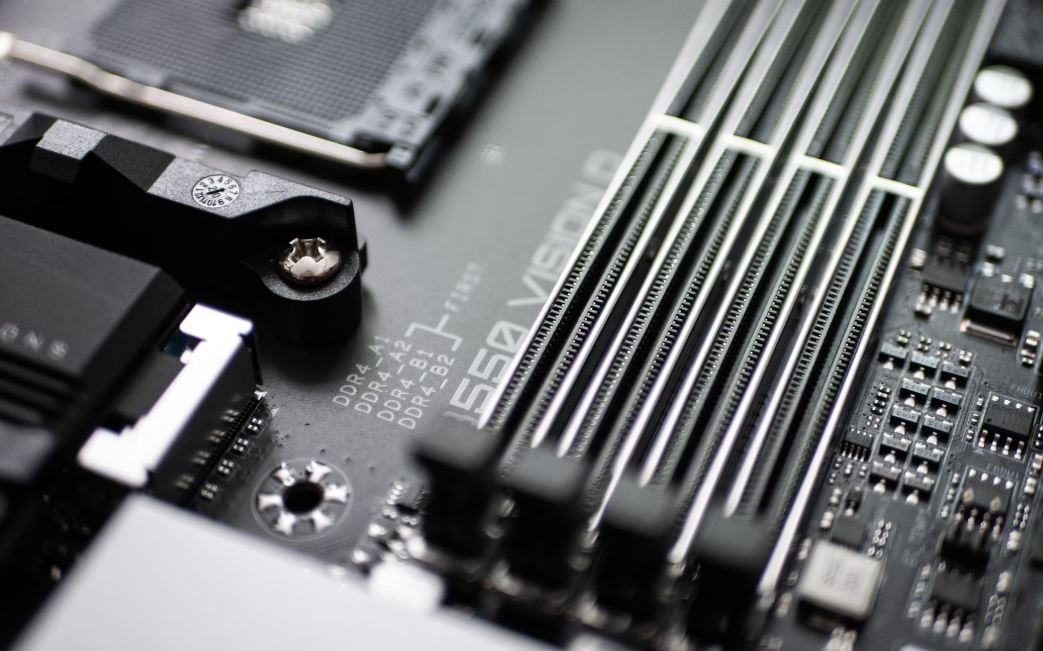AI Application to Robotics
Artificial Intelligence (AI) has revolutionized the field of robotics, enabling machines to perform complex tasks with increased efficiency and accuracy. The integration of AI algorithms and sensors into robots has allowed them to navigate, perceive, learn, and interact with the world around them. This article explores the various applications of AI in robotics and its impact on industries and daily life.
Key Takeaways:
- AI enhances robots’ ability to navigate, perceive, learn, and interact.
- AI in robotics has applications in industries such as manufacturing, healthcare, and agriculture.
- Collaborative robots, or “cobots,” are being used alongside humans to improve productivity and safety.
- AI-powered robots are becoming increasingly autonomous and capable of making decisions on their own.
**Robots equipped with AI algorithms** can analyze sensor data in real-time, enabling them to **navigate** through complex environments more accurately and efficiently. They can adapt to changing conditions, avoid obstacles, and calculate optimal paths. *This enhanced navigation capability allows robots to perform tasks in environments that were previously inaccessible.*
**Perception** is another critical aspect of robotics where AI has found extensive application. By utilizing deep learning algorithms and advanced sensors, robots can identify and categorize objects, recognize human gestures and speech, and interpret their surroundings. *This ability to perceive and understand the world enables robots to interact more effectively with humans and their environment.*
One of the remarkable applications of AI in robotics is in the field of **manufacturing**. AI-powered robots are designed to work collaboratively with humans to improve productivity and safety in industrial settings. These humanoid or robotic arms, known as **cobots**, can assist in assembly line tasks, reducing human effort and minimizing errors. They are equipped with sensors and algorithms that allow them to understand their environment, adjust their movements accordingly, and safely collaborate with human workers.
| Industry | AI Application |
|---|---|
| Manufacturing | Cobots working alongside humans in assembly lines |
| Healthcare | Surgical robots assisting in precision surgery |
| Agriculture | Autonomous robots for harvesting and crop monitoring |
The healthcare sector has also witnessed the positive impact of **AI-powered robots**. Surgical robots equipped with AI algorithms enable more precise and minimally invasive procedures. They can analyze patient data, provide real-time feedback to surgeons, and automate certain surgical tasks. These robots enhance surgical outcomes and reduce the risk of human error. In addition, AI can be utilized in prosthetics and rehabilitation robots to improve the quality of life for individuals with disabilities.
In the field of **agriculture**, AI-powered robots are gaining momentum. These autonomous robots are equipped with computer vision capabilities and sensors that allow them to detect and monitor crops. They can perform precision tasks such as harvesting, weeding, and spraying pesticides, thereby optimizing agricultural practices and increasing crop yield. The use of AI in agriculture reduces the need for manual labor and improves efficiency.
| AI Application | Benefits |
|---|---|
| Autonomous navigation | Accurate and efficient movement in complex environments |
| Object recognition | Improved interaction with humans and surroundings |
| Collaborative work | Increased productivity and safety in industries |
AI is driving the development of more autonomous robots capable of **making decisions** on their own. These intelligent machines are designed to perceive, learn, and reason, allowing them to adapt to new situations and work in unstructured environments. They can use the data they gather to continually improve their performance and decision-making abilities. This level of autonomy has significant implications for a wide range of fields, including transportation, exploration, and search and rescue operations.
In conclusion, the application of AI to robotics has brought about significant advancements across various industries. From enhancing navigation and perception abilities to enabling collaborative work and autonomy, AI has transformed the capabilities of robots. As AI technology further advances, we can expect robots to become even more sophisticated and integrated into our daily lives, revolutionizing the way we work and interact with the world around us.

Common Misconceptions
Misconception 1: AI will replace human workers in the field
Many people believe that the integration of AI into robotics will result in widespread job losses, with machines replacing humans across various industries. However, this is a misconception.
- AI is designed to augment human capabilities, not replace them.
- Humans are still needed to perform tasks that require complex decision-making, creativity, and emotional intelligence.
- AI can provide support in repetitive and mundane tasks, enabling humans to focus on more strategic and innovative activities.
Misconception 2: Robots will become sentient and take over the world
Hollywood movies often portray AI-powered robots as malevolent beings that eventually rebel against their human creators. However, this is purely a fictional concept.
- Robots are programmed to follow specific instructions and algorithms, limiting their capabilities to the tasks they are designed for.
- AI algorithms lack the consciousness and self-awareness required for sentient behavior.
- Ethical guidelines and safety mechanisms are implemented to ensure robots operate within predefined boundaries.
Misconception 3: AI will always make the best decisions
It is commonly assumed that AI systems are infallible and will always make superior decisions compared to humans. However, this is not always the case.
- AI systems heavily rely on the quality and accuracy of the data they are trained on. Biases in the data can lead to biased predictions.
- Human judgments and ethical considerations are essential for evaluating AI-driven decisions and avoiding potential pitfalls.
- AI systems can sometimes struggle with complex, unpredictable scenarios that require human judgment and contextual understanding.
Misconception 4: AI will eliminate the need for human interaction in customer service
Some believe that AI-powered chatbots and virtual assistants will completely replace human agents in customer service roles. However, this belief is misguided.
- While AI can handle simple and repetitive customer inquiries, complex issues often require human empathy and understanding.
- Emotional support from humans is crucial in situations where customers are frustrated, upset, or seeking personalized service.
- AI and human collaboration can enhance customer service by allowing AI to handle routine tasks, freeing up humans to focus on more complex and meaningful interactions.
Misconception 5: AI cannot be biased
Many assume that AI systems are inherently neutral and free from bias. However, this is not the case.
- AI algorithms can inadvertently amplify existing biases present in the data they are trained on.
- Biases can arise due to historically unequal training datasets or inherent bias in the programming and decision-making process.
- Continuous monitoring, rigorous testing, and diverse data collection are essential to mitigate and address bias in AI applications.

Application of AI in Robotics for Autonomous Vehicles
In recent years, the integration of artificial intelligence (AI) and robotics has revolutionized various industries. One such application is the development of autonomous vehicles, which rely on AI algorithms to navigate the world and make informed decisions. The following tables provide fascinating insights into the advancements and impact of AI in robotics for autonomous vehicles.
Top 10 Companies Focused on AI in Autonomous Vehicles
| Company | Location | Year Founded | Investment Raised (USD millions) |
|---|---|---|---|
| Tesla | Palo Alto, California | 2003 | 19,000 |
| Waymo | Mountain View, California | 2009 | 3,300 |
| Cruise | San Francisco, California | 2013 | 7,250 |
| Uber ATG | Pittsburgh, Pennsylvania | 2014 | 2,700 |
| Mobileye | Jerusalem, Israel | 1999 | 1,500 |
| Zoox | Foster City, California | 2014 | 955 |
| Aptiv | Dublin, Ireland | 2017 | 2,000 |
| Nuro | Mountain View, California | 2016 | 1,500 |
| Argo AI | Pittsburgh, Pennsylvania | 2016 | 2,600 |
| Aurora | Palo Alto, California | 2016 | 1,100 |
Benefits of AI-Powered Autonomous Vehicles
The implementation of AI in robotics for autonomous vehicles brings about numerous advantages, enhancing safety, efficiency, and convenience. The table below highlights some key benefits that AI-powered autonomous vehicles offer.
| Benefit | Description |
|---|---|
| Reduced Accidents | Autonomous vehicles have the potential to significantly decrease the number of accidents caused by human error. |
| Improved Traffic Flow | AI algorithms enable autonomous vehicles to communicate and coordinate, leading to optimized traffic flow and reduced congestion. |
| Enhanced Efficiency | Autonomous vehicles optimize routes, reduce idle time, and minimize fuel consumption, resulting in overall increased efficiency. |
| Accessibility for All | AI-powered autonomous vehicles offer a transportation solution for individuals who are unable to drive, including the elderly and those with disabilities. |
| Eco-Friendly | Autonomous vehicles contribute to a greener environment by promoting electric and hybrid technology, reducing emissions. |
Challenges in Implementing AI for Autonomous Vehicles
While the potential benefits of AI in robotics for autonomous vehicles are immense, there are various hurdles and challenges in the implementation process. The table below outlines some key challenges faced by developers and researchers.
| Challenge | Description |
|---|---|
| Regulatory Framework | The development of regulations that address the safety and liability aspects of autonomous vehicles is an ongoing challenge. |
| Data Privacy and Security | Protecting the privacy of users and securing sensitive data collected by autonomous vehicles is a crucial concern. |
| Unpredictable Road Conditions | Autonomous vehicles must navigate various unpredictable scenarios, such as extreme weather conditions or construction zones. |
| Public Perception | Convincing the public of the safety and reliability of autonomous vehicles remains a significant challenge, impacting adoption rates. |
| Ethical Decision Making | AI algorithms need to be programmed to make ethically sound decisions in complex situations, involving scenarios with potential harm. |
Autonomous Vehicle Market Growth Projections
The market for AI-powered autonomous vehicles is experiencing rapid growth worldwide. The table below illustrates the projected market values in billions of U.S. dollars for the next five years.
| Year | Market Value (USD billions) |
|---|---|
| 2022 | 36.2 |
| 2023 | 46.8 |
| 2024 | 58.9 |
| 2025 | 72.3 |
| 2026 | 87.6 |
Real-World AI-Powered Autonomous Vehicle Deployments
AI-driven autonomous vehicles are being deployed across various industries and applications. The table below provides notable examples of real-world implementations.
| Industry/Application | Company/Organization | Location |
|---|---|---|
| Ride-Hailing | Waymo | Phoenix, Arizona |
| Delivery Services | Nuro | Houston, Texas |
| Mineral Transportation | Rio Tinto | Pilbara, Australia |
| Public Transportation | NAVYA | Various cities globally |
| Agricultural | John Deere | Iowa, United States |
AI Technologies Enabling Autonomous Vehicle Perception
To operate autonomously, vehicles require advanced perception capabilities. The table below highlights key AI technologies that enable vehicles to perceive and understand their surroundings.
| Technology | Description |
|---|---|
| LiDAR | Light Detection and Ranging technology uses laser light to measure distances, creating a high-resolution 3D map of the environment. |
| Radar | Radio Detection and Ranging technology uses radio waves to detect objects and estimate their distance and velocity. |
| Computer Vision | Computer vision algorithms process visual inputs from cameras to identify objects, detect obstacles, and interpret road signs. |
| Ultrasonic Sensors | Ultrasonic sensors use sound waves to measure distances and detect obstacles in the vicinity of the vehicle. |
| GPS | Global Positioning System provides accurate location data, aiding in navigation and precise positioning of autonomous vehicles. |
AI-Enabled Autonomous Vehicles Across the Globe
AI-powered autonomous vehicles have transcended geographical boundaries. The table below displays some countries at the forefront of adopting and implementing autonomous vehicles.
| Country | Noteworthy Implementation |
|---|---|
| United States | California’s DMV permits fully driverless testing and deployment of autonomous vehicles on public roads. |
| China | Beijing launched the first autonomous taxi service in a limited area, making autonomous vehicles available to the public. |
| Japan | Nissan conducted the first-ever public road test of an autonomous vehicle in Tokyo. |
| Germany | Mercedes-Benz received a license to test fully autonomous vehicles on public roads in Baden-Württemberg. |
| South Korea | Hyundai has completed successful tests of level 4 autonomous vehicles on public roads in Seoul. |
AI application to robotics has revolutionized the development of autonomous vehicles, offering immense potential to transform transportation. Through continuous research, deployment, and overcoming challenges, AI-powered autonomous vehicles will soon become a commonplace mode of transportation, revolutionizing the way we move and live.
Frequently Asked Questions
What is AI application to robotics?
AI application to robotics refers to the use of artificial intelligence (AI) technologies and algorithms in robots to enhance their capabilities in perceiving, learning, reasoning, and decision making. It allows robots to interact with their environment, adapt to changing situations, and perform complex tasks autonomously.
How does AI benefit robotics?
AI brings several benefits to robotics by enabling robots to perform advanced tasks and exhibit intelligent behavior. It allows robots to analyze sensor data, recognize objects and patterns, plan and execute actions, and learn from experience. AI also enables robots to adapt to new environments, make decisions based on uncertain or incomplete information, and collaborate with humans effectively.
What are some real-world applications of AI in robotics?
AI has found applications in various domains of robotics, including industrial automation, healthcare, agriculture, transportation, and space exploration. Some examples include autonomous vehicles, robot-assisted surgeries, warehouse automation, drone surveillance, robotic prosthetics, and planetary exploration robots.
How does AI enable robots to perceive their environment?
AI enables robots to perceive their environment through various sensing technologies such as cameras, LIDAR, ultrasonic sensors, and tactile sensors. AI algorithms process the sensor data to recognize objects, detect obstacles, estimate distances, and create a representation of the surroundings. Machine learning techniques are often used to train models for object recognition and scene understanding.
Can robots learn from their experiences?
Yes, robots can learn from their experiences using AI techniques such as machine learning and reinforcement learning. By collecting data from their interactions with the environment, robots can improve their performance over time. They can learn to identify patterns, make predictions, and refine their decision-making processes. This ability to learn from experience is essential for robots to adapt to new situations and improve their capabilities.
How does AI enable robots to perform complex tasks?
AI enables robots to perform complex tasks by combining perception, planning, and control. With AI algorithms, robots can analyze sensor data to understand the current state of the environment, generate plans or trajectories to achieve specific goals, and control their actuators to execute the planned actions. AI techniques such as path planning, motion control, and task scheduling are commonly employed to perform complex tasks efficiently.
Can AI-powered robots collaborate with humans?
Yes, AI-powered robots can collaborate with humans in various ways. They can understand and interpret human input, communicate effectively using natural language or gestures, and adapt their behavior to work alongside humans safely and efficiently. Collaborative robots, known as cobots, are designed to interact and collaborate with humans in shared workspaces, enhancing productivity and safety in industries.
What are the ethical implications of AI in robotics?
The integration of AI in robotics raises several ethical questions and concerns. These include issues related to privacy, transparency, bias in decision-making algorithms, job displacement, and the potential for AI-powered robots to cause harm to humans. Ethical frameworks and regulations are being developed to ensure responsible use of AI in robotics and address these concerns.
What are the challenges in AI application to robotics?
AI application to robotics presents several challenges, including the complexity of integrating AI algorithms into robotic systems, the need for large amounts of training data to achieve accurate models, the interpretability and trustworthiness of AI-based robot decisions, and the ethical considerations mentioned earlier. Technical, societal, and regulatory challenges need to be addressed to fully leverage the potential of AI in robotics.
What is the future of AI application to robotics?
The future of AI application to robotics is promising. As AI technologies continue to advance, robots will become more intelligent, adaptable, and capable of performing a wide range of tasks. The integration of AI with robotics holds great potential in areas such as smart homes, healthcare assistance, disaster response, space exploration, and advanced manufacturing. However, ongoing research, innovation, and collaboration are necessary to overcome the challenges and ensure the responsible and beneficial development of AI-powered robots.





